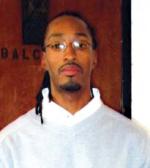April 16, 2015

Editor's Note: Today, Judge Carol Ball issued a 70 page ruling that will grant Sean Ellis– convicted of the 1993 murder of Boston Police Detective John Mulligan— a new trial, citing new information that was not heard by jurors at his previous trial. Developing story...
From April 16, 2015— Final arguments in Suffolk Superior Court last week wrapped up seven days of hearings to consider whether Sean K. Ellis, a Dorchester man who was convicted in 1995 of the 1993 murder of Boston Police Department Detective John Mulligan, deserves a new trial.
Judge Carol Ball’s ruling is expected by the end of May.
Ellis, who was 21 when convicted, has always maintained his innocence, and his attorney, Rosemary Scapicchio, has offered into evidence new information that she claims would have influenced his jurors’ deliberations in 1995 had they heard it.
Earlier coverage: Man convicted in cop killing seeks new trial- Jan. 2014
Arguing for the Commonwealth was Asst. District Attorney Paul Linn, assisted by Suffolk County Chief of Homicide Edmond Zabin.
Scapicchio has found two official reports detailing allegations that Mulligan committed armed robberies of drug dealers with his friends and colleagues, Detectives Walter Robinson and Kenneth Acerra, one in 1991 and a second in 1993. Acerra and Robinson both later pleaded guilty to a string of such crimes after Detective John Brazil, another confessed robber, turned evidence against them in exchange for immunity from federal prosecution.
The relevance for Ellis is that Acerra, Robinson, and Brazil were members of the elite task force investigating Mulligan’s murder – a conflict of interest, Scapicchio argues, because the men needed “to cover the tracks of what Mulligan and they were doing.” Motivated to “shut down the investigation as quickly as they could, so their own criminal activity didn’t get exposed,” they “railroaded a black kid who was out buying diapers,” she has charged.
Indeed, the three corrupt detectives each had a hand in the evidence used to convict Ellis, most notably a contested photo ID made by the teenaged niece of Acerra’s domestic partner – a witness he brought forward without acknowledging their relationship until months later.
Mulligan was shot five times in the face just before dawn as he slept in his SUV that was parked in the fire lane of a Roslindale Walgreens drugstore. “It was an execution,” said then-Police Commissioner Bill Bratton, and investigators proceeded on the theory of “a message” sent by someone bent on revenge, a person known to the street-smart detective, they assumed, because he allowed his assailant to sit in his passenger seat.
Yet within ten days, Ellis, then 19, and a friend, Terry Patterson, 18, were arrested, and the prosecution’s theory of the case changed to that of a “random robbery” by two teens who saw the cop sleeping, decided they wanted his gun for a trophy, and shot him from curbside through a three-inch opening in the car’s window.
Ellis and Patterson had stopped at Walgreens that morning, and Ellis purchased diapers in full view of ceiling-mounted video cameras. He voluntarily spoke to police and told them his story, and police later found his box of LUVS with the Walgreens receipt.
Patterson was convicted in January1995, largely because his fingerprints were found on the door frame of Mulligan’s vehicle; yet he was released in 2006 after the Massachusetts Supreme Judicial Court disallowed the fingerprint evidence as “unscientific” and “unreliable.”
Ellis’s September 1995 conviction came only after his third trial; two previous juries had deadlocked over whether he was in a joint venture with Patterson. He was sentenced to life without parole, and the years since have been pocked with legal setbacks: a 1998 retrial motion submitted by his trial lawyers, Norman Zalkind and David Duncan, was denied, as was their appeal.
At the hearings, Scapicchio brought out two actions she says Acerra and Robinson took to cover their illicit drug raids: According to two witnesses, within hours of the murder Robinson went to Mulligan’s condominium and removed money from the slain detective’s coat pocket – money he never reported to the department, Scapicchio notes. And Acerra discovered Mulligan’s cell phone in a “secret compartment” of his SUV a full week after crime scene technicians failed to find it there, and it was declared stolen. Scapicchio contends that Acerra removed the phone, wiped it clean of numbers (a claim ADA Linn disputes), and then put it back.
Scapicchio feels a new jury, armed with today’s knowledge that these investigators – deemed among “the best and the brightest” by lead investigator Sgt. Det. Thomas O’Leary – were linked to Mulligan in criminal activities – should be given the opportunity to review the case.
Referring to those crimes, Scapicchio noted in an interview that “we did have some of these pieces before, but we definitely did not have the connection with Mulligan. And [at the hearings] we were able to make those connections... how that each one of the officers...was involved in central portions of this investigation, which created a conflict that should give us a new trial. If we’d had that evidence...the jury might have believed our side.”
Linn called the two robberies involving Mulligan “isolated incidents” that occurred 18 months apart. He said the 1991 robbery, allegedly committed with Robinson at gunpoint in a Brighton parking lot, was “uncorroborated” (although police deemed the sole informant’s reliability “good,” and the incident was under investigation), and he said there was no evidence Mulligan knew the 1993 drug raid of two Commonwealth Avenue apartments led by Acerra and Robinson was illegitimate.
Linn said that Terry Patterson’s statement that he parked on a side street after shopping at Walgreens and walked back to the store with Ellis “to buy a cigar,” plus sightings by several witnesses of two black men “fitting the men’s general descriptions” and the fact Patterson changed the appearance of his vehicle after the murder, all led to the “inescapable conclusion that one of these men committed the crime.” Yet no positive ID made was made of either man, save the photo ID of Ellis made by Detective Acerra’s family relative.
Scapicchio also claims that tips from the police telephone hotline, several naming specific suspects and motives, were withheld from Ellis’s trial attorneys, as was a detailed lead from one Boston officer that another officer was behind the slaying. Zalkind and Duncan each testified that they did not receive these tips and, if they had, they would have sent out an investigator and submitted motions for further discovery, as was their demonstrated practice.
Topics:



